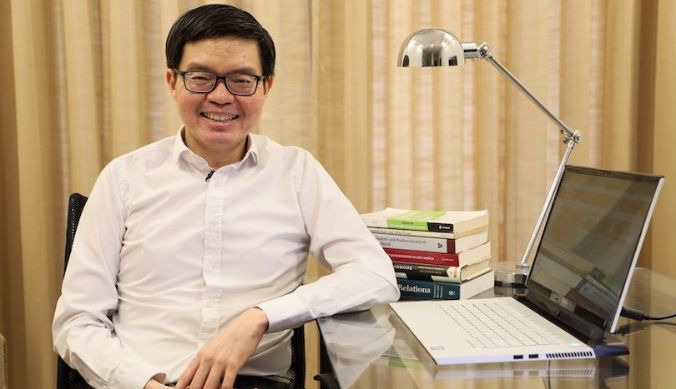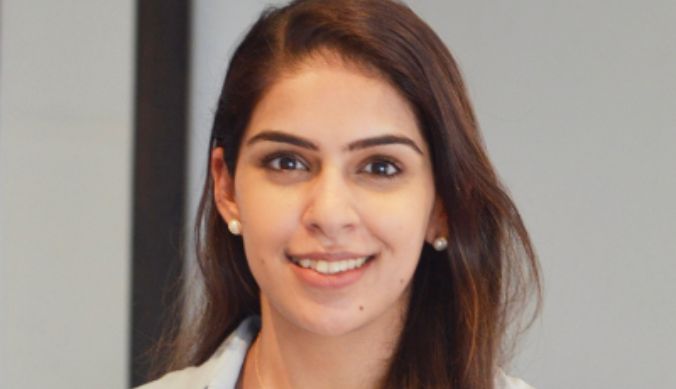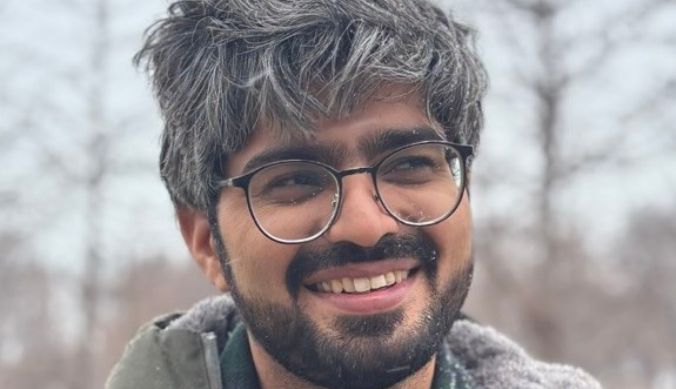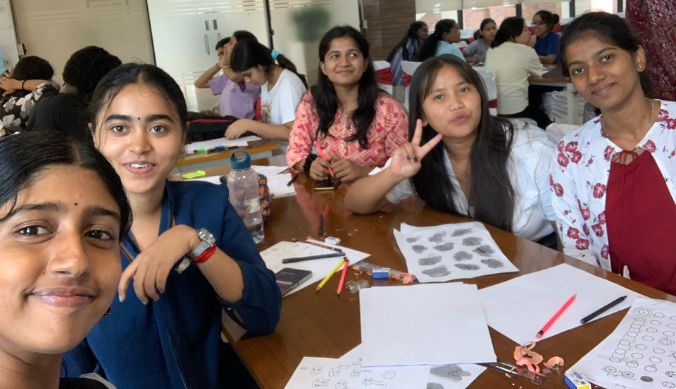Classroom or Theatrical Drama? Inside the Teaching Methods of Dr. Krittika Bhattacharjee
Dr. Krittika Bhattacharjee, Head of Undergraduate Writing Programme, Assistant Professor of Academic Writing, Ashoka University gives unique insights into her teaching style at Ashoka. She explains how she blends academics with theatrical creativity to foster dynamic learning and critical thinking. Her aim is to create playful, inclusive, and thoughtful educational experiences for all students at Ashoka.
Q1. Your education background is in History and Religious Studies, but your current work explores intersections between academia and theatre performance. How has this interdisciplinary approach shaped your teaching methodology at Ashoka University?
I struggle with the idea of ‘interdisciplinarity’. The term is sometimes too easily applied, and the rules of dominant disciplines often govern the conversation. But, yes, my academic roots are a bit wild, and my teaching methods tend to be eclectic: a mixed bag of exercises, games, text-work and writing. I use fundamental theatre intuitions about the use of space, time, bodies and action in planning classes. I move tables and chairs in the room to suit what I’m teaching, I have students engage with text in a tactile sense. I think in divisions when planning a class (a bit like ‘acts’ in a play): say, a game is played individually– like this one – (a shorter Act One), followed by a collective discussion of what was discovered (a long Act Two), and concluded with small-group work to develop one principle from what was discussed (Act Three).
My academic training in History and Religious Studies does not limit my selection of texts (which are drawn from a range of disciplines and contexts) nor does it define my palette for what constitutes “good” writing. However, it certainly influences the ways in which I encourage students to handle text: with alertness, not reverence – recognizing what has been said and the circumstances that gave rise to it while being skeptical about its completeness as a record.
Q2. You explore how theatre exercises can be embedded in your teaching. Could you share some examples of how you use performance-based techniques in your classroom?
I’m cautious about bringing theatre into a classroom and instrumentalizing it in a misguided effort of ‘interdisciplinarity’. This means that I don’t want to strip theatre for parts, and frame disembedded exercises as ‘tools’ without engaging with the context within which they emerged. I also dislike the framing of teachers as performers and try to encourage students to not be too performative themselves. When I bring in theatre exercises, it is not to build individual aura (helping students improve their ‘presence’) but to pursue more modest aims of improving writing, either by complicating a simple process or simplifying a complex one.
I’ve adapted an exercise for playwrights used by theatre-maker Neel Chaudhuri (Visiting Faculty, Ashoka University) to help students see how good interpretation rests on good description. Students hear a clip of environmental sound and have to describe it without interpreting or comparing it: a tricksy exercise that forces them to really listen and engage with the basic challenge of writing (how do you put not words into words?). I’ve used the dialogue-led form of a play to help students understand how arguments are ‘braided’ in persuasive writing, and have had them dramatise academic arguments as two-person scenes to expand upon an idea. I leaned on simple theatre games extensively during the online covid semester to help students connect with each other, finding it remarkable how quickly they produced an ensemble that took pleasure in learning together.
Q3. You’ve been a part of the Undergraduate Writing Programme at Ashoka for several years and have been teaching ‘Introduction to Critical Thinking (ICT)’ course since 2018, how do you think it is an essential course for students?
The importance of ICT does not rest on its unique or exhaustive grasp over ‘critical thinking’ . Instead, it does two things that makes it ‘essential’. First: it affords the time and space required for an individual to reflect upon the ways in which they think, read and write. This is not trivial. Imagine the value of multiple opportunities to consider how you make reading choices, how you consume information, whether what you wrote is really what you meant. There is an especial value to doing this when you are on the brink of the big transition from school to college, when some of these patterns will need to be understood and altered. Which brings me to the second use of ICT: it strips away the assumed ‘mystery’ of academic work and makes explicit to students some of the labour involved in producing a meaningful piece of thinking. This is important because universities are often in danger of reproducing limited and unhelpful conceptions of intelligence and capability. This can lead to some students feeling as though they don’t belong there (because they don’t ‘get it’). The work of the ICT is to show students that producing robust academic work is not simply a matter of ‘talent’; it can be cultivated over time, through repeated attention to basic habits of reading and writing, and within a helping and supportive learning community.
Q4. You co-run the Tadpole Repertory Theatre Company while also teaching at Ashoka. How do these two domains influence each other in your life?
One helps me do the other. If I didn’t have access to university spaces – the rigour it asserts, and the freedom it gives to study whatever you want – I’d coagulate into a motionless blob. If I didn’t do theatre, I’d ossify and be a pain to be around. The two domains don’t always work smoothly together, however, my work in the theatre in relation to text (as an actor and a writer) makes me impatient with outdated conventions regulating what academic work should sound like; my academic work makes me, at times, an annoying nit-picker and pedant in a writer’s room. The last three years have been an education in these tensions because I have been working on the same issues – drawn from my academic training in Religious Studies– through different routes: academic and dramatic. My recent ICTs have had modules on ‘faith’; my most prominent writing project has been the adaptation of my doctoral thesis (an ethnography of visitors to the ‘holy’ island of Iona) into a full-length play and I’m currently co-devising an ensemble play about mass hysteria around a ‘miraculous’ event. I’m only beginning to learn how to utilise the possibilities that each domain gives: academic work with its emphasis on clarity, organisation, sense-making, argument; theatre with its imperative to evoke, to pull something out of the audience, to explore grey spaces. Both are social pursuits, though and affirm that individuals can do more when they are placed within a network of relations.
Q5. You have organised a ‘Critical Writing Pedagogies Symposium’ at Ashoka, can you elaborate on the event and let us know your key takeaways from it?
The symposium was organised by a 14-strong team at the Undergraduate Writing Programme in 2023-2024 with the support of Sage. It was our contribution to the growing cluster of initiatives (both institutional and independent) around writing pedagogy in India. The symposium gathered writing teachers and pedagogues across India: those who have been instrumental in the setting up writing centres and departments in Indian universities, those who have come to the field more recently and those working outside institutional spaces. We covered four areas: the tacit principles that set up a writing classroom; methods and provocations that prompt student writing or students’ reflection on writing – including ways of giving feedback; how teachers utilise their own background and training; the language politics that play out in the classroom. The event clarified how distinct writing classrooms are relative to other university spaces and how distinct the academic background of writing teachers can be (no one in the room had a degree specifically in writing, say). It revealed how much invisible pastoral care accompanies the teacher of writing and threw up many questions surrounding language, privilege, legibility and institutional support that occupy this growing field at this time.
Q6. You’ve been teaching at Ashoka for several years now. How has your experience evolved over time, and what new directions or experiments are you excited to explore in your teaching here?
I taught in Ashoka first as a contract worker and then, since 2021, as faculty. This was a key turning point because I began to think not just about my teaching but about my involvement with the university, and what I wanted to contribute to. Another turning point came after my third year of teaching when students I had taught in the past began to graduate. Having senior students to speak with and being able to watch their growth made me consider my own work differently. I began to ask former students to come to the ICT classroom as guests, I spoke with students about their work and shared my own with them. I am more open with students today than I was seven years ago. The second change has been my more recent efforts to design modules around religion and faith (specifically the assumed boundaries of ‘religion’, the everyday practices of ‘religion’ and the potency of spaces deemed religious). These are seen to be risky topics, and students typically avoid them. However, the notion of ‘religion’ is bound up in the idea of the collective, and to bind discussions about it to the private sphere or fade them out from classroom curricula would impoverish the field, let alone the many people who have a relationship to ‘religion’. I want to keep finding useful and interesting ways to encourage students at Ashoka to explore matters of faith with curiosity, frankness and care.
Q7. What are your long-term goals at Ashoka University and how do you envision Ashoka contributing to your professional growth?
I want to help the university improve the ways in which it supports English Language Learners (ELL). Having taught ELL students in the Bridge Programme and in ICT classes, I think part of the task is to encourage students to build a playful relationship with language where confidence is not predicated on correctness. To that end, I would love for Ashoka to have a functional Ludic Language Lab, echoing the importance that many universities in the USA and Japan are now giving to games as pedagogical tools. Here, students can explore language within a playful closed-world environment where language is used differently (like in a crossword puzzle) or through games that encourage language comfort through story-telling (like Asmodee’s Dixit cards). I also want to build courses that are practical and creative even if their eventual aim is that of an ICT. Specifically, I’d like to try and teach a version of ICT that uses theatre as a method of study and means of sharing: where students are on their feet more, where the final project is the text of a play built over stages.
Finally, I’d also love to help in the development of bilingual or multilingual resources in critical thinking and writing pedagogy, and to see ICTs developed in other languages. We are so lucky with the resources and infrastructure we have at Ashoka. It would be good to see how these can be better shared and utilised with the outside world.
__________________________________________________________________
Interview conducted by Kangna Verma, Academic Communications, Research and Development Office, Ashoka University
Study at Ashoka















